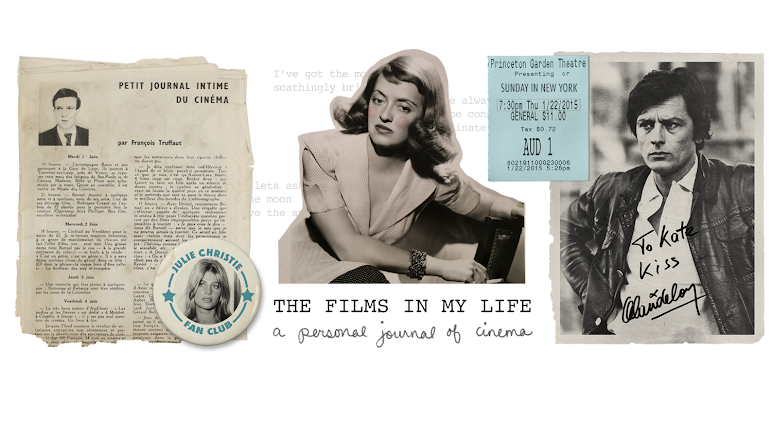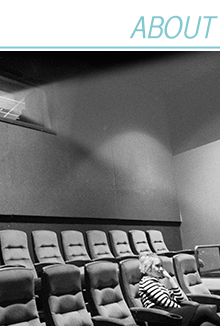
Today begins a new weekly Saturday series, "Starlet Dreams" where I'll dedicate a post each week to a girl whose career never quite became what she hoped it would be.
The inaugural post belongs to Irene Ware, a talented 1930's hopeful who was recently spotlighted on Movie-Tone news. Matthew kindly agreed to let me republish his wonderful Irene Ware post here in full. Enjoy!
***
"My Heart Belongs to Irene Ware"
Sometimes, there's simply no reason at all why some people become stars and others do not.
And of all the rungs on the Hollywood ladder to find oneself stalled on, it seems to me that 'almost made it' just has to be the loneliest.
The nobodies are anonymous. Nobody bothers them, nobody points them out in restaurants or asks what ever happened to them, nobody is watching them, or waiting for them to fall.
An actor who's never going to get leads can remodel himself as a character actor. No problem. He may even get a longer career out of it than the stars he envies.
But if you're a beautiful starlet, it's obvious you're not in the game from a desire to play small parts. And you are going to get noticed; you'll get that first level of stardom handed to you; that tantalising, tormenting first rung... they'll know your name, they'll see your picture in all the magazines. But when it comes to wanting to see movies with you in the lead...
It is these nearly-made-it starlets that have the least armour.
Clearly, they live only to be the name above the title. And if they never make it, the wind must blow hard and cold around those swimsuits.
I have many favourites among these also-rans, and in almost every case, there's really no good reason in the world why they didn't make that final leap into the vindication of unambiguous stardom. Talent has very little to do with it: many a star made it without it, many a failure failed in spite of it.
What, I mean what that really mattered, did Marie Macdonald lack?
Just luck. Just the breaks.
And then there's this, from my Wonder Album of Filmland, a pictorial guide to the stars of 1932:
It is, maybe, a little early to include a picture of JUNE VLASEK in such a gallery as this. Her film career has only just begun and the world has yet to see her real capabilities. But she deserves to appear in any film-land picture display because she really is admitted on all sides to be "the most beautiful girl in Hollywood." You do not need to look very hard to see why.
And yet... not enough, June; not enough.
You see her here and there. She's in Chandu the Magician (1932), and Bonnie Scotland (1935) with Laurel and Hardy... she kept at it until 1947, did a bit of tv... died in 2005.
And yes, in those early thirties appearances, she really could be the most beautiful woman in Hollywood. But for June, for some reason... not enough.
Also appearing in Chandu is the actress who is, for me, the undisputed queen of the very-nearlys.
Irene Ware is most things a Hollywood goddess should be, so far as I am fit to judge.
She has that certain grace, and ease, and slightly aristocratic poise that unites women as different in every other way as Crawford and Colbert and Fay Wray and Kay Francis.
As an actress? Hard to say how good she is: from the little she is given the chance to show, she seems fine.
As a beauty: almost unrivalled.
Why, then, was Irene Ware not a major Hollywood star of the thirties?
Because the whole thing's a lottery, that's why. Because the whole thing's a joke.
The IMDB would have me believe that she was crowned Miss United States of 1926, at the age of sixteen. Quite the honour, but not apparently so: I am grateful to Allure, one of my favourite blogs, for this more accurate account:
Irene Ahlberg was born November 6, 1910 in Pelham, NY. Several references state she was crowned Miss America of 1926. Not so, she was named Miss Greater NY in 1929, and then Miss United States for the Miss Universe competition.
However, this is not the Miss Universe you have come to know and love/hate. This "Miss Universe" was the Galveston, Tex., International Beauty Contest.
Virtually ignored by the U. S. press, the Galveston tournament was big news elsewhere in the world. In Paris, Madrid, Vienna, Rio de Janeiro, editors reported on just what Miss France, Miss Spain, Miss Austria, Miss Brazil were doing, wearing, saying at each instant of the final ceremony. For the record, Austria won and Irene took second, and it was reported as "Irene Ahlberg, a Manhattan stenographer, 18 and blond, won $1,000 and second honors".
I'm guessing she took that $1000 to help the move to show business. From late 1929 through early 1932 Irene appeared in several of Earl Carroll's Vanities broadway productions. Hollywood and a name change to Irene Ware came in 1932 when she signed a contract with Fox.
The Fox contract brought her one juicy lead, at least, in Chandu, the delightful adaptation of the hit radio serial with Edmund Lowe somewhat stolid and draggy as the mysterious Chandu and Bela Lugosi on full battery as the villain Roxor. Irene, as the Princess Nadji, is everything anyone could have reasonably expected the Princess Nadji to be: likeable, attractive in states of peril, spectrally beautiful at all times.
It led to very little, alas. The old story: she couldn't get out of support roles; always on trial, never given the big shot. She's sixth-billed but the definite standout in Six Hours To Live (1932), second fiddle to Boots Mallory in Humanity (1933), looking for chances in the shadow of Carole Lombard in Brief Moment (1933) for Columbia.
Back at Fox she was sliding further and further down the cast roll: fourth-ranked female in the pre-Code musical My Weakness (1933), an uncredited showgirl in Moulin Rouge (1935), blink and you'll miss her in The Affairs of Cellini (1934), a film that also conspires to squander Fay Wray.
Presumably, from this rather pointless evidence, someone somewhere, sat behind a desk with gravy stains on his tie, decreed that Irene Ware didn't have what it takes to make it.
She went to other studios, doing the usual juggling act: leads for the fly-by-nights and in-and-outs for the majors. (Look sharp and you'll see her in Gold Diggers of 1937.)
The best news around this time came from Universal, who picked her up for a couple of good spots in Let's Talk It Over (1934) and Rendezvous at Midnight (1935) and gave her her best ever leading chance in The Raven (1935).
The Raven is the one that breaks your heart. The female lead, reunited with Lugosi, doing screaming in cellars and sophisticated banter with one of my favourite male nearlys - Lester Matthews, the nearly-Melvyn Douglas - she is stunning and she is delightful. If anyone has what it takes, she has what it takes! Now, I'm not going to pretend that I have not seen this performance criticised, even condemned. The Midnight Marquee book Bitches, Bimbos and Virgins: Women in the Horror Film slams her; calls her "a doll in a silly wig, not a living, breathing person."
Well, there's room for all views, I have no doubt.
All I can say is I'm glad I've not seen that version of The Raven. I'll stick with the one I stayed up later than I'd ever stayed up before in my life - 1:35 am! - to see in the summer of 1983... the one where we first see her curled up on Lugosi's sofa in a shimmering satin dress, he sat at the organ playing Bach's Tocata and Fugue, the desert island disc of all movie mad scientists, she purring "You're almost not a man..."
The one where she dances 'The Spirit of Poe'.
The one where she is absolutely magnificent.
Could Irene Ware dance? Or is one of the reasons why she wears a mask in this gorgeous scene from The Raven so as to disguise the presence of a dancing stand-in? None is credited...
Obviously, it helps not only that she is in so stylised a production - this is top of the range Universal horror - but also in so intense a drama.
The plot has Lugosi as a great surgeon and Poe-obsessed sadist who saves her life after a car crash and then becomes sexually obsessed with her. When she spurns his advances, he merrily invites her, her boyfriend and her father to his house for a weekend party so as to spend the night torturing them to death in his basement. Here he has built a variety of torture devices inspired by Poe's stories, including his razor-edged pendulum and "room where the walls come together"!
It's ghoulish stuff - Britain put a ban on imported horror films on account of it - and Irene, who could easily have been hopelessly inadequate as the object of murderous erotic obsession, breezes through the role with both a star's beauty and that star's confidence that counts for so much more.
The rest is mainly Poverty Row.
Many of these thirties films are available on budget DVD: the romantic comedy False Pretenses (1935) and the thrillers Murder at Glen Athol and The Dark Hour (both 1936), in particular, are eminently worth your time and your small change. You can watch them, and almost pretend they were, say, big studio B's. Pretend she's the star she should have been.
Most fascinating of all is King Kelly of the USA (1934), a truly insane Monogram musical. Poverty Row is always compelling when it gets big ideas, and this piece, an absurdist Ruritarian farce with Edgar Kennedy, Franklin Pangborn and a bunch of songs, is strange and funny and consistently delightful, reminiscent of Duck Soup and Million Dollar Legs and suchlike oddities that proliferated around the same time.
Irene is Tania, princess of a fantasy kingdom dependent for its economy on the export of mops, now in dire straits following the invention of the vacuum cleaner. She has an animated love song performed in her honour. She slides down a banister. She is utterly adorable.
Irene Ware ended her career trying to make a go of things in Britain. No dice. Her last film was Outside the Three-Mile Limit (1940), with Jack Holt doing likewise.
She didn't branch out into television in the fifties.
She died in March, 1993.
Could she have been a big star? Yes, she could have been a big star.
***






















